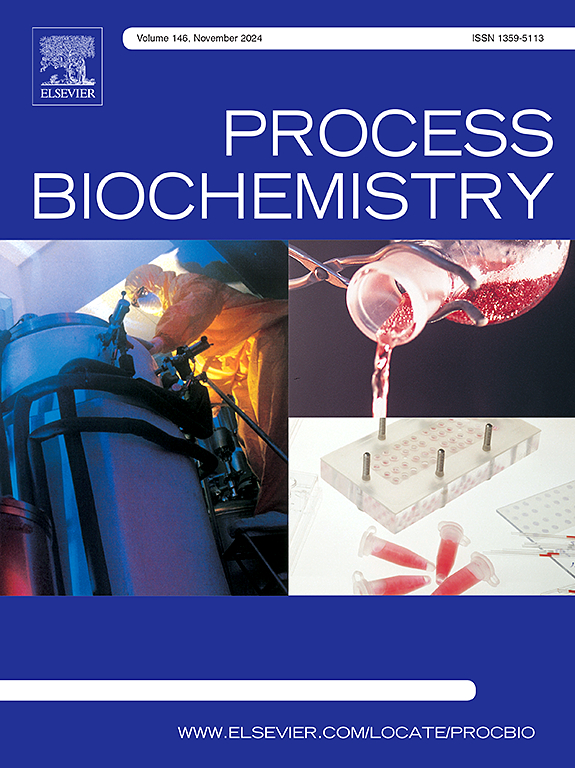评估红洋葱皮提取物抗癌和抗菌活性的生物潜力
IF 3.7
3区 生物学
Q2 BIOCHEMISTRY & MOLECULAR BIOLOGY
引用次数: 0
摘要
化疗虽然能有效抗癌,但经常会引起严重的不良反应,而且缺乏特异性。红洋葱皮是一种富含多酚和类黄酮的副产品,本研究旨在评估红洋葱皮作为具有抗癌和抗菌特性的天然化合物宝库的潜力。研究人员对两种提取物,特别是乙醇红洋葱皮(EROS)提取物和色谱红洋葱皮(CROS)提取物进行了全面的生物分析。气相色谱-质谱(GC-MS)和红外光谱(IR)显示,色谱法红洋葱皮提取物主要含有二羟基苯甲酸(DHBA)及其衍生物,以及公认能增强二羟基苯甲酸渗透细胞膜的脂肪酸。使用琼脂井扩散法、最小抑菌浓度(MIC)和最小杀菌浓度(MMC)测试系统地评估了提取物对革兰氏阳性菌、革兰氏阴性菌和酵母菌的抗菌活性。结果明确显示,CROS 提取物在浓度分别为 50、60 和 70 µg/ml 时,对大肠杆菌、蜡样芽孢杆菌和白僵菌具有明显的抗菌效果。此外,与接受全提取物治疗的小鼠相比,接受 CROS 提取物治疗的小鼠的生化指标(包括超氧化物歧化酶 (SOD) 水平)有所提高,肝脏组织学也有所改善。这些有说服力的研究结果表明,CROS 提取物有望成为一种天然、无害的癌症和微生物感染干预疗法。然而,为了支持这些发现并揭示其复杂的作用机制,进一步的研究势在必行。本文章由计算机程序翻译,如有差异,请以英文原文为准。
Evaluation of biological potential of red onion skin extract for anticancer and antimicrobial activities
Chemotherapy, while effective in combating cancer, frequently induces severe adverse effects and lacks specificity. This investigation aims to assess the potential of red onion skin, a byproduct abundant in polyphenols and flavonoids, as a reservoir of natural compounds possessing anticancer and antimicrobial properties. Two extracts, specifically ethanolic red onion skin (EROS) extract, and chromatographic red onion skin (CROS) extract were subjected to comprehensive biological analysis. Gas chromatography-mass spectrometry (GC-MS) and infrared (IR) spectroscopy revealed that the CROS extract predominantly encompasses dihydroxy benzoic acid (DHBA) and its derivatives, alongside fatty acids recognized for enhancing DHBA penetration into cellular membranes. The antimicrobial activity of the extracts was systematically evaluated against Gram-positive bacteria, Gram-negative bacteria, and yeast using the agar well diffusion method, the minimum inhibition concentration (MIC), and the minimum microbicidal concentration (MMC) tests. The results unequivocally demonstrated that the CROS extract exhibited markedly superior antibacterial efficacy against E. coli, B. cereus, and C. albicans at concentrations of 50, 60, and 70 µg/ml, respectively. Moreover, mice administered with CROS extract enhanced biochemical profiles, including superoxide dismutase (SOD) levels, and improved liver histology compared to those treated with the whole extract. These discerning findings propose that CROS extract harbors substantial promise as a natural and innocuous therapeutic intervention for cancer and microbial infections. Nevertheless, further more research is imperative to support these findings and unravel the intricate mechanisms of its action.
求助全文
通过发布文献求助,成功后即可免费获取论文全文。
去求助
来源期刊

Process Biochemistry
生物-工程:化工
CiteScore
8.30
自引率
4.50%
发文量
374
审稿时长
53 days
期刊介绍:
Process Biochemistry is an application-orientated research journal devoted to reporting advances with originality and novelty, in the science and technology of the processes involving bioactive molecules and living organisms. These processes concern the production of useful metabolites or materials, or the removal of toxic compounds using tools and methods of current biology and engineering. Its main areas of interest include novel bioprocesses and enabling technologies (such as nanobiotechnology, tissue engineering, directed evolution, metabolic engineering, systems biology, and synthetic biology) applicable in food (nutraceutical), healthcare (medical, pharmaceutical, cosmetic), energy (biofuels), environmental, and biorefinery industries and their underlying biological and engineering principles.
 求助内容:
求助内容: 应助结果提醒方式:
应助结果提醒方式:


